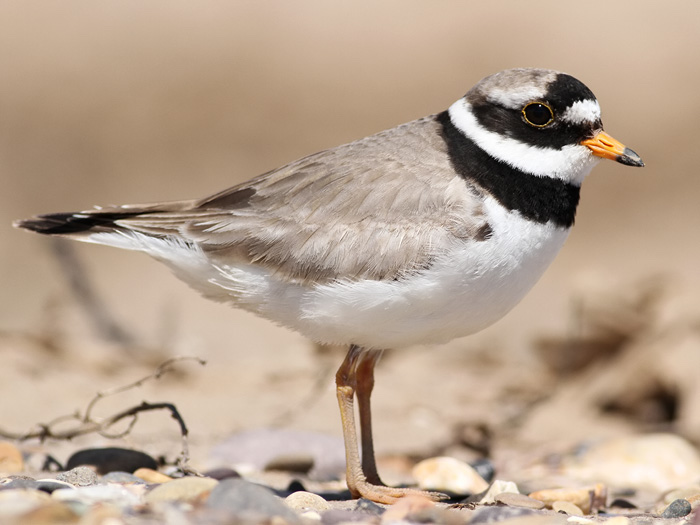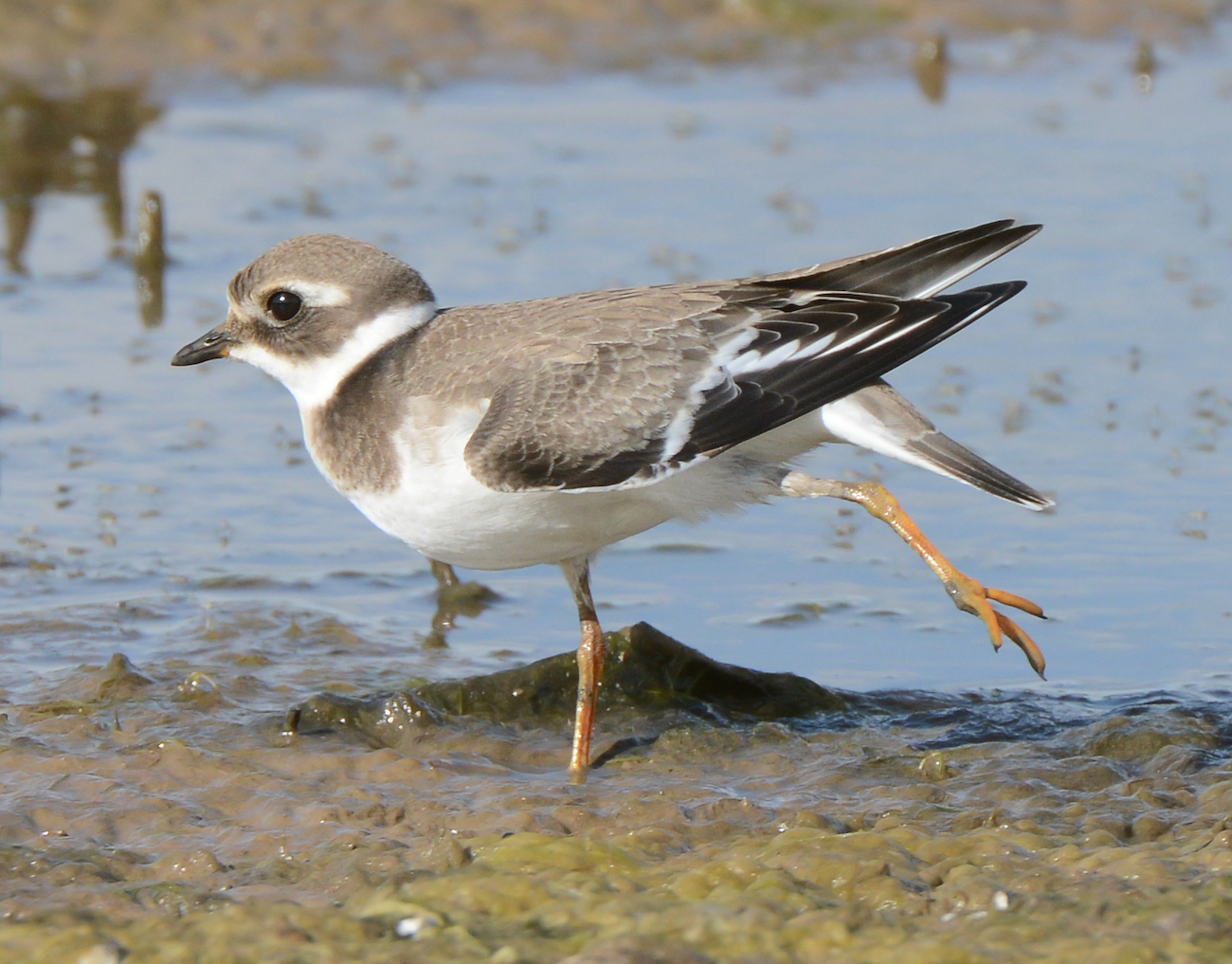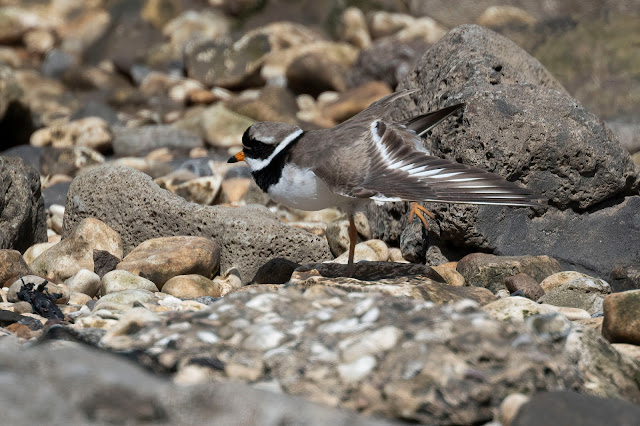Ringed Plover Charadrius hiaticula
Nominate British and southern Scandinavian form common passage migrant, mainly coastal. Fairly common declining towards scarce breeder. Northern Scandinavian and Russian form tundrae (Tundra Ringed Plover) fairly common passage migrant.



Ringed Plover is having a bad time breeding in Lincolnshire. Its coastal breeding sites came under disturbance pressure from the 1960s onwards. In the 1970s it started to spread inland. The Atlas estimated around 280 pairs in the late 1980s with around a third of those inland across 18 inland 10km squares. Seventeen out of 18 coastal squares had confirmed breeding and by the time of the BTO Atlas of 2007-2011 only 8 inland 10km squares were occupied, and 8 out of 18 squares had confirmed breeding. There are no recent detailed estimates, but the population must have at least halved and could be below 100 pairs. Peak passage months tend to be May and August and the wintering population appears to have declined. The Atlas estimated 700-800 birds wintered in the late 1980s. LBR tables indicate that numbers have been 200-300 in the 5 years to 2018.
The BTO ringing scheme has recorded many recoveries of birds ringed in Lincolnshire and found in various European countries and North Africa, as well as on breeding grounds in northern Russia. Like many of the medium-sized waders, they can be long-lived and Wash-ringed birds have been found to survive to the age of 6-12 years.
(Account as per new Birds of Lincolnshire (2021), included September 2022)
